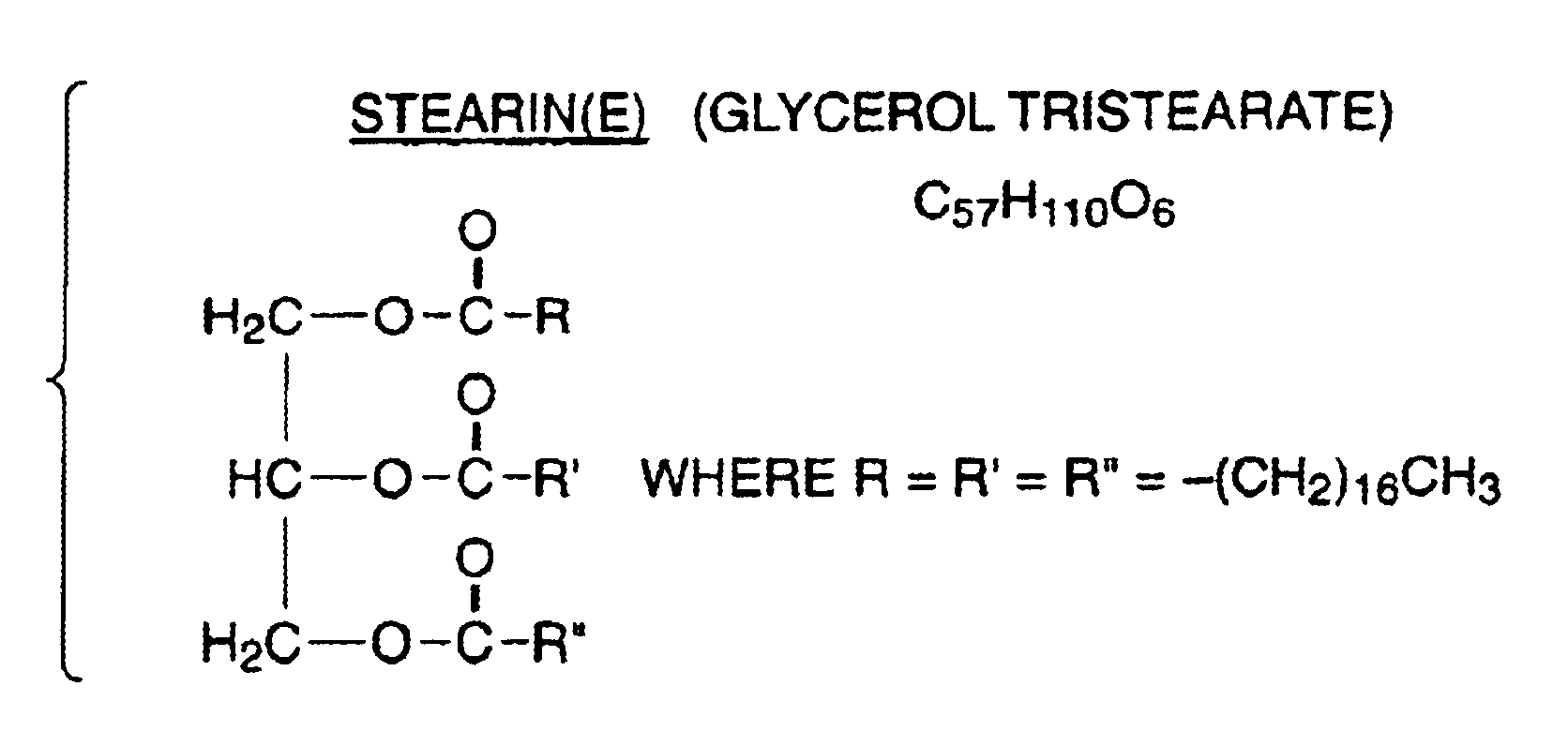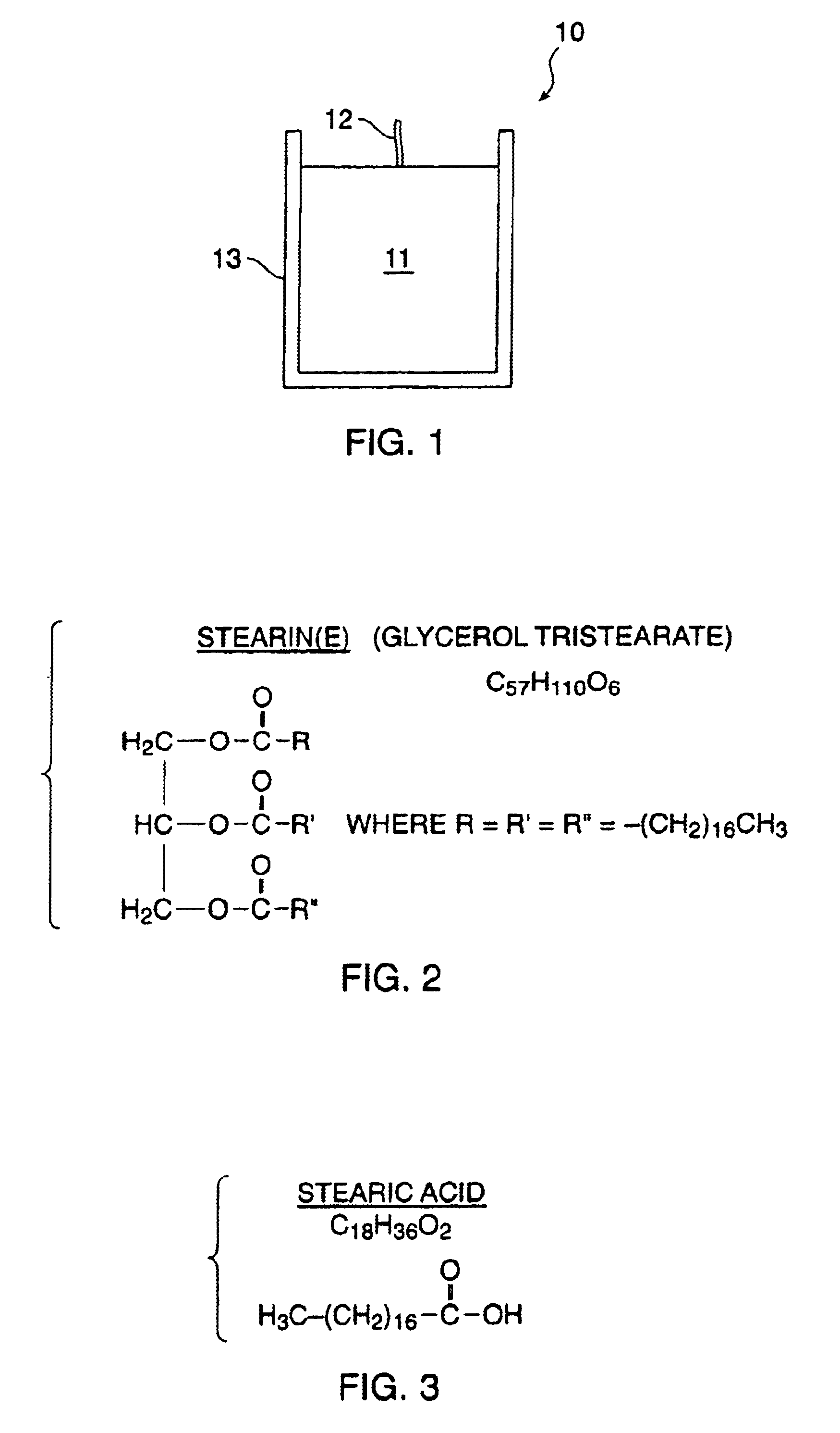Low-soot, low-smoke renewable resource candle
a renewable resource and low-smoke technology, applied in the field of candles, can solve the problems of animal based candles being objectionable to some people, producing undesirable amounts of soot or smoke, and achieving the effect of economics
- Summary
- Abstract
- Description
- Claims
- Application Information
AI Technical Summary
Benefits of technology
Problems solved by technology
Method used
Image
Examples
Embodiment Construction
taken together with the drawings.
BRIEF DESCRIPTION OF THE DRAWINGS
FIG. 1 is a diagram of a candle in accordance with the present invention.
FIG. 2 is a diagram of a triglyceride in accordance with the present invention.
FIG. 3 is a diagram of a free fatty acid in accordance with the present invention.
DETAILED DESCRIPTION
The present invention achieves low-soot, low-smoke candles by virtue in part of using triglyerides (TGs) and free fatty acids (FFAs) that have low Iodine Values (IVs). IV for purposes of the present invention is a measure of the unsaturation of fats and oils and is expressed in terms of the number of centigrams of iodine absorbed per gram of sample (% iodine absorbed). The preferred measurement protocol is Official Method Cd 1d-92 of the American Oil Chemists Society, though other protocols may be used. IVs are an indication of the degree of unsaturation within the triglycerides and / or free fatty acids, and the amount of unsaturated triglycerides and / or free fatty acid...
PUM
| Property | Measurement | Unit |
|---|---|---|
| iodine value | aaaaa | aaaaa |
| weight | aaaaa | aaaaa |
| renewable | aaaaa | aaaaa |
Abstract
Description
Claims
Application Information
 Login to View More
Login to View More - R&D
- Intellectual Property
- Life Sciences
- Materials
- Tech Scout
- Unparalleled Data Quality
- Higher Quality Content
- 60% Fewer Hallucinations
Browse by: Latest US Patents, China's latest patents, Technical Efficacy Thesaurus, Application Domain, Technology Topic, Popular Technical Reports.
© 2025 PatSnap. All rights reserved.Legal|Privacy policy|Modern Slavery Act Transparency Statement|Sitemap|About US| Contact US: help@patsnap.com


